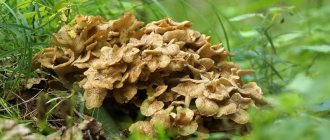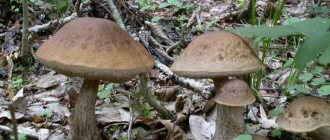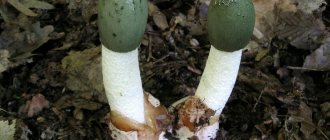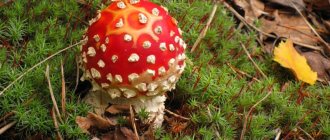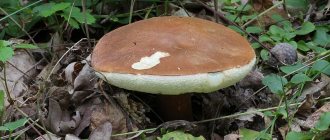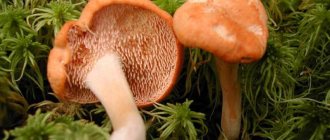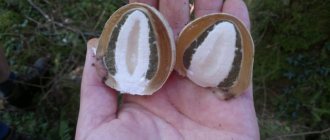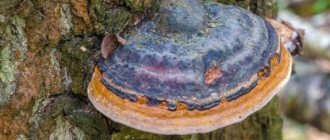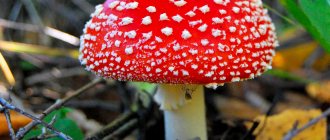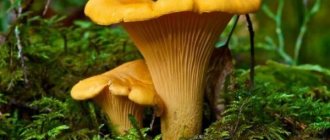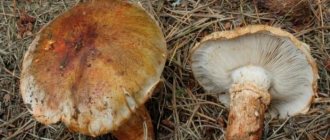Taxonomy
The multicolored tramethes mushroom belongs to the genus Trametes, family Polyporaceae.
Other species names:
- Coriolus variegated;
- Coriolus multicolor;
- Multi-colored tinder fungus;
- Variegated tinder fungus;
- Turkey tail;
- Cuckoo tail;
- Pestelushka;
- Yoon-ji;
- Yun-zhi;
- Kawaratake.
Latin names: Trametes versicolor, Boletus atrofuscus, Cellularia cyathiformis, Polyporus caesioglaucus, Polystictus azureus, Polystictus neaniscus.
RESULTS
RESULTS µÐ½ Ð´Ð»Ñ Ð±Ð¾Ð»ÑÑинÑÑва лÑдей пÑи пÑи еме внÑÑÑÑÑооÑвеÑÑÑвÑÑÑим обÑазом. RESULTS Ñ Ð¿Ñиема ÑÑого гÑиба. regurgitation ¼Ð¸Ð¾ÑеÑÐ°Ð¿Ð¸Ñ Ð¸ пÑинимали ÑÐ The ²Ð»ÐµÐºÐ°ÐµÑÑÑ Ð¸Ð· ÑÑÑÑовика ѰзноÑвеÑного), иÑп ASSURANCE, ASSURANCE, ASSURANCE, ASSURANCE ROOM ¶Ðµ пÑÐ¾Ð±Ð»ÐµÐ¼Ñ Ñ Ð¿ÐµÑенÑÑ. RESULTS, RESEARCH, RESEARCH, RESULTS, ASSURANCE.
RESULTS ениÑ
RESULTS: RESULTS: RESULTS Ò ¾Ð¿Ð°ÑноÑÑи пÑи ROOM › RESULTS ½Ð¾Ð³Ð¾ вÑеда Ð´Ð»Ñ Ð²Ð°Ñ Ð¸ Ñебенка, возд LOSS OF RESEARCH.
RESEARCH
RESULTS ROOM ² на оÑнове ÑÑа RESULTS SMALLERY.
Characteristics and description of the structure
The diameter of the mushroom is 3–5 cm, length - 5–8 cm. It is characterized by a fan-shaped and semicircular shape. This species grows sideways to the wood. At the base, several fruiting bodies can grow together; they almost never grow alone. It has a very silky, velvety and delicate surface, which alternates with bare and fleecy areas.
The color varies from grayish, bluish to yellowish and brown. The edges of the cap are usually lighter than the center of the mushroom. The base of this tinder fungus has a greenish tint. After drying it becomes white.
The hat is semicircular, with a diameter of no more than 10 cm. From the name you can understand that it has a multi-colored color. Most often these are sinuous areas of gray, white, dark blue, yellow, brown, black and silver, with a silky and shiny surface to the touch.
The hymenophore (lower part of the cap) is finely porous, tubular, light, slightly yellowish in color. Ripe fruit bodies acquire a brownish tint and narrow edges.
The flesh of multi-colored trametes is thin, light and leathery. When cut, the color is white or brown. The smell is unique and pleasant.
Video
A little history
Originally described in 1753 by Carl Linnaeus, who gave it the binomial name Boletus versicolor, it was only in 1939 that the species was renamed Trametes versicolor by Czech mycologist Albert Pilat (1903 – 1974).
Academician Yablokov
Red-leaved hazelnut, bred in 1961. Included in the list of varieties recommended for cultivation in the northwestern direction of Russia, as well as in other northern regions. Mother variety: hybrid 86 with small fruits. Father variety: Trebizond, a unique fruitful variety. Characteristics of hazelnuts by Academician Yablokov:
- Reaches an average height of 3.6 m.
- Winter hardiness is average and immunity to weevil is low.
- In young shrubs, male flowers almost do not form, but nuts are set regularly and early. In adult bushes, catkins appear, but freeze due to spring frosts; there are many female flowers; they can withstand temperatures down to -6 °C.
- The nuts are large and elongated, with a thin shell.
- The harvest is harvested in early October. The best harvest of the Akademika Yablokova variety is obtained when pollinated by Tambov late.
Academician Yablokov's hazelnuts have excellent characteristics
False doubles
Trametes versicolor is distinguished by multi-colored, velvety fruiting bodies. It will be difficult to confuse this species with other representatives of tinder fungi.
| Color | hat | Pulp | Area | |
| Trametes multicolored | the surface is covered with sinuous areas of gray, brown, black and silver tones | semicircular, with a diameter of no more than 10 cm | thin, light and leathery, white or brown in color | widespread, inhabit many forests of the planet, settle on stumps and trees |
| Trametes coarse-haired | greenish, gray, white | half-shaped, thin, gray, covered with hard fluff | two-layer – the top layer is fibrous, soft, gray, the bottom layer is cork, white | inhabit the Northern region of the hemisphere, grow on deciduous trees |
| Fluffy Trametes | olive gray, ash gray | fleecy | leathery, white, thin | deciduous forests, sometimes found on treated wood |
Recommended hazelnut varieties
The best pollinators for all varieties: common hazel, 'Ganja', 'P2M18', 'Lozovsky spherical', 'Sharovoy'.
For coastal areas, the following varieties are recommended: 'Donbass-1', 'Donbass-2', 'Mariupolsky', 'Kolobok', 'Trebizond', 'Anadolsky', 'Volnovakhsky', 'Nikitsky-62', 'Nikitsky-2240', 'Coastal', 'Milas'.
For the steppe: 'Kirovogradsky', 'Trebizond', 'Grandiose', 'Stepnoy-83', 'September', 'Ukraine-50', 'Koronchatyy', 'Masterpiece', 'Harvest-80', ' Gift to the Young People', 'Davydovsky', 'Nakhodka', 'Pulevoy', 'Topkara', 'Kharkov-3', 'Ganja', 'Lozovsky spherical', 'Chocolate'.
For the northern regions: 'Wedge-shaped', 'Lozovsky club-shaped', 'Belgrade novelty', 'Borovskoy', 'Dar Pavlenko', 'Nakhodka', 'Kharkov-1', 'Kharkov-2', 'Kharkov-3' and ' Kharkov-4', 'Pulevoy', etc.
A reminder for those who do not yet have hazelnuts in their garden: a person needs to consume at least 60-70 g of kernels every day. Plant hazelnuts and be healthy!
plodkr.kiev.ua
Edibility, medicinal properties, benefits and contraindications
The mushroom is inedible; most often it is used in folk medicine and herbal medicine as an effective medicine.
Due to the content of useful substances and elements that make up this mushroom, it has the following medicinal properties:
- stimulates the immune system;
- increases the overall energy level in the body;
- side effects from chemotherapy and radiation therapy are reduced, their effectiveness increases significantly;
- reduces the amount of mucus in the respiratory tract;
- allows you to increase overall life expectancy, especially in people suffering from cancer;
- normalizes appetite, stabilizes weight.
Polysaccharide-K (Kresin, PSK, PSP) is an anti-cancer drug derived from this mushroom. Its benefits are priceless. It is used side by side with chemotherapy in treating cancer patients, and its other role is to downplay the negative effects of drugs.
used in chemotherapy. Japan's Ministry of Health and Welfare approved the drug in the 1980s. The main types of cancer that the drug helped solve were stomach and colorectal cancer.
Reference! Trametes motley helps in the treatment of other diseases. For example, it is believed to treat hepatitis B, an infectious disease that affects the liver.
Other diseases that this tinder fungus can fight include malaria, a fever common in the tropics.
The benefits of this mushroom are amazing. It is effective in maintaining blood sugar levels in diabetes mellitus and is used for rheumatism and hypertension.
Can reduce blood cholesterol levels, temperature and pain. Has antiviral and antibacterial properties. Strengthens the immune system.
It has no contraindications as such, but before using products based on it, you should still consult a doctor, especially for pregnant and lactating women.
Contains immunostimulating polysaccharopeptides
Polysaccharopeptides are protein-bound polysaccharides (carbohydrates) found, for example, in Trametes versicolor extract.
Krestin (PSK) and polysaccharide peptide (PSP) are two types of polysaccharopeptides found in Trametes versicolor ().
PSK and PSP have powerful immunomodulatory properties. They stimulate the immune response by both activating and inhibiting certain types of immune cells and suppressing inflammation.
For example, test-tube studies have shown that PSP increases monocytes, which are types of white blood cells that fight infection and boost immunity ().
PSK stimulates dendritic cells, which increase immunity to toxins and regulate the immune response. In addition, PSK activates specialized white blood cells called macrophages, which protect your body from harmful pathogens such as certain bacteria ().
Due to their ability to naturally strengthen the immune system, PSP and PSK are commonly used as anti-cancer agents in combination with surgery, chemotherapy and/or radiation therapy in countries such as Japan and China ().
Chemical composition and production of mushroom-based preparations
Tremetes multicolored contains the following beneficial substances:
- polyunsaturated fatty acids;
- B vitamins;
- amino acids;
- polysaccharides;
- glycoproteins;
- trace elements: manganese, iron, potassium, calcium, zinc, chromium, cobalt.
These mushrooms are specially grown on plantations to make medicinal extracts. Subsequently, it is subjected to special procedures so that it is easier to digest and more effective. To prevent the entry of air, moisture and light, the finished product is hermetically packaged.
Story
Trameta versicolor is well known in folk medicine in Eastern countries. The plant was widely used in ancient times to restore mental balance, strengthen physical health and replenish energy in the human body. In the healing practice of Taoists, the mushroom was especially often used to replenish energy, since it was believed that the plant absorbed all its power during its stay on the tree. Therefore, Trameta was often prescribed to energetically weak people. Raw materials The cultivation of Trameta takes place on plantations in China, which are specially planted with hard deciduous wood and must be in certain climatic conditions. For the future medicine, a high-quality extract is extracted from mushrooms, to obtain 1 kg of which 10 kg of Trameta are taken. Such a complex procedure for extracting the medicine is quite justified, since the ground powder does not have the full beneficial properties. Therefore, in order to create a truly highly effective drug, an extract is obtained. Moreover, it also undergoes specific physical and chemical procedures that help the drug become easily digestible and highly effective. The pharmaceutical production that produces Trameta extract complies with the strict pharmaceutical standard - Good Manufacturing of Practical - which is in force today throughout the world. In order to control the number of bacteria, literally everything in pharmaceutical production can be tested - modern equipment, wall coverings, indoor air. The quality of raw materials, which must be excellent, is especially carefully controlled. After production, the extract is hermetically packaged to prevent the penetration of light, moisture, oxygen, and then sterilized.
Interesting Facts
- The mushroom can be used to brew tea.
- In Japan, they make good money on trametes; they mainly sell finished raw materials.
- In China, turkey tail decoction is often used to treat various diseases.
The mushroom Trameta versicolor has a lot of useful healing properties, which is why it is often used in alternative medicine.
Information sources
Bondartseva M. A. Trametes versicolor - Trametes versicolor // Families albatrellaceae, aporpiaceae, boletopsiaceae, bondartzeviaceae, ganodermaceae, corticiaceae (species with a porous hymenophore), lachnocladian (species with a tubular hymenophore), polyporaceae (genera with a tubular hymenophore), poriaceae, rigidoporaceae , feolic, fistulinic / Res. ed. A. E. Kovalenko. - St. Petersburg: Nauka, 1998. - P. 329. - 391 p. — (Identifier of mushrooms of Russia. Order Aphyllophoraceae; Issue 2). — 500 copies. — ISBN 5-02-026625-6.
Hazelnut propagation
Using seed propagation, agronomists obtain new, interesting, improved varieties:
- Selected nuts are collected and processed to protect them from rodents.
- Seeds are prepared for planting 3–4 months in advance. They are soaked in water for 5 days, dried and placed in warm sand, stirring once every 2 weeks. After this time, the nuts are briefly immersed in the snow.
When purchasing a seedling of the desired variety on the market, buy only those that were obtained vegetatively and not grown from seeds. Reproduction by dividing the bush and layering is the most common.
- Dividing the bush: the hazelnuts are dug up and divided so that each part has shoots and there is a lump of earth on the roots.
- Propagation by horizontal layering: select several shoots with buds and place them in dug grooves, then attach them there. 40 days after the first leaves appear, fill the furrows with soil. In summer, water and dig in cuttings. In a year they can be dug up, cut from the bush and divided.
The use of trametes for medicinal purposes
The use of Turkish tail is possible for both therapeutic and preventive purposes. When using the product, follow safety precautions!
Preparations based on tinder fungus
A drug based on this type of polypore is prescribed for the prevention or complex therapy of diseases that are oncological in nature or predispose to cancer. Localization of pathological processes for which trametes is prescribed:
- Gastrointestinal tract;
- bronchopulmonary system;
- genitourinary tract;
- mammary gland.
The drug shows good effectiveness in the fight against:
- prostatitis;
- prostate adenoma;
- fibroids of the uterus and other organs;
- fibroadenomatosis;
- diffuse fibrous mastopathy, etc.
The drug is available in capsule form. The initial dosage is 2 capsules per day (200 mg). But if necessary, the dosage regimen can be changed by increasing the concentration of tramethes extract to 600 mg/day (6 capsules).
Important! Before starting treatment, be sure to consult your doctor!
Use in folk medicine
Several medicinal compounds are prepared based on multi-colored tinder fungus:
- Tincture. You can buy it at a pharmacy or prepare it yourself by pouring 1 part of mushroom powder with 10 parts of vodka or alcohol. After 14 days the product is ready for use. It should be taken 15-40 drops, diluted or washed down with a sufficient amount of water. The product should be taken three times a day, half an hour before or an hour after meals.
- Decoction. 2 tbsp. l. add chopped mushroom pulp to 1 liter of water and simmer covered over low heat for an hour. Thoroughly filter the finished medicine and squeeze out the cake. Drink the decoction chilled, 1 glass 2 times a day, 30 minutes before meals.
Treatment with such folk remedies based on multi-colored tinder fungus should be continued until the symptoms of the disease disappear. Duration of 1 course – 2-3 weeks. After this, you need to take a break and, if necessary, repeat the therapy.
Be careful! Do not give such medications to children under 14 years of age! They are also prohibited during pregnancy and lactation. Follow all safety precautions, and if any adverse reactions occur, consult a doctor immediately.
In modern oncology, several stages of tumor metastasis are defined:
1. Cancer cells break away from the tumor and begin to circulate in the blood and lymph vessels; 2. “Settling” of cancer cells in a vessel of any organ, in which case they are destroyed and grow into the wall of the vessel. 3. “Dormant state”; 4. As a result of the proliferation of cancer cells, a metastatic germ begins to form; 5. A metastatic node is formed, which often has its own bloodstream; 6. The metastatic node begins to grow, gradually moving to the level of mature metastasis.
Mechanisms of inhibition of tumor metastasis by proteoglucans Trametas versicolor: 1. by suppressing the development of blood and lymphatic vessels of the tumor, the separation of cancer cells from the main node is prevented; 2. help reduce the survival of detached cancer cells in the general lymphatic and circulatory system, and also prevent cancer cells from attaching to the walls of blood vessels. 3) inhibit the mobility of cancer cells, which is why they cannot fully migrate into the organ tissue. 6. Other mechanisms of resistance to tumor development: 1 . The drug helps to increase the amount of serum complement C3, which is a complex protein complex that works against foreign agents; 2. Prevents the development of blood vessels in the tumor area of the body; 3. Promotes increased susceptibility of tumor tissue to chemotherapy and radiotherapy; 4. Has an antimutational effect, which develops due to the antioxidant effect of the drug Trameta. As a result, free radicals are captured and chromosome damage to normal cells is prevented.
Trametes multicolored - description of where it grows, the toxicity of the mushroom
Trametes versicolor is a tinder fungus that has a unique structure of the fruiting body (resembles a strongly unfolded fan). It grows in fairly large groups. Instances in groups are arranged in the form of rosettes. These representatives of the polypore family, which belong to inedible species, have a solid set of useful properties: antibacterial, antiviral.
Description of the species
Trametes versicolor is a perennial mushroom, maximum dimensions are up to 90 mm in width and 50 mm in length. The shape of representatives of this species can be completely different, most often it is rounded. In fact, it is a parasitic fungus that grows on the trunk of trees.
The surface of the tramethes fruiting body is quite delicate, characterized by many convolutions having different color shades - from yellowish to dirty brown. As a rule, the edges are somewhat lighter than the central part of the cap. The color of the base of the fruiting body is dark olive, the pulp has a pleasant aroma.
Procurement of raw materials
Trametes is an inedible type of mushroom; most often it is collected for subsequent harvesting for medicinal purposes. Peak fruiting and harvesting period is from August to September inclusive.
Collecting trametes involves cutting off young specimens and their subsequent cleaning. After this, a special heat treatment is performed - the mushrooms are dried, and the temperature in the oven should be no more and no less than the specified values (range from 50 to 60 degrees). Thoroughly dried raw materials are usually crushed to obtain a powdery mass, which is poured into a sealed container (container or packaging) and sterilized.
Trametes in folk medicine
This type of mushroom is widely known in Asian countries and has long been used as a remedy in Chinese folk medicine. This is due to the content of many useful components in the mushroom pulp: bioactive polysaccharides, peptides, glycoproteins, triterpenes, saturated fatty acids, amino acids, vitamins and microelements.
The raw materials obtained from this mushroom are mainly used for the treatment of oncological diseases (malignant neoplasms). Directly for treatment, a decoction is prepared from ready-made raw materials.
Trametes is also often used in Asian countries to treat a fairly large number of infectious diseases and ailments of internal organs. For these purposes, special mushroom infusions are prepared.
In Japan, Trametes is used to treat diabetes mellitus, hypertension, rheumatism and thrombosis. A medicinal ointment is usually prepared from the mushroom.
Application in traditional medicine
In Japan and China, raw materials from this type of mushroom are used as one of the components of complex treatment of cancer. This is explained by the fact that the use of Trametes as a medicine helps make atypical cells more sensitive to the effects of chemotherapy and radiation therapy. Also, medicines based on this type of mushroom help in suppressing inflammatory processes that accompany some ailments.
Contraindications and what to consider
However, raw materials obtained from the fruiting bodies of Trametes should not be used for treatment in children, as well as women during pregnancy and lactation.
Any use of this drug must be agreed with the attending physician. Do not forget that any medicine can bring both benefit and harm to the body.
Interesting fact
- Trametes is also known under such names as misty mushroom, vungji, kawaratake.
- In Asian countries, trametes is still used to this day to treat inflammatory processes in the respiratory system.
- The fog mushroom is considered the most valuable in Japan; profits from sales of finished raw materials reach several million dollars annually.
Mechanisms of action of Trameta multicolored
A. Mechanism of action in the treatment of tumors. If a person is diagnosed with a tumor, this means that the activity of antitumor defenses and corresponding mechanisms has weakened in his body. To activate them, immunomodulators are used, consisting of a small protein in the form of a peptide or protein and complex sugar molecules (polysaccharide). The result is a molecule called a glycoprotein.
Action of Trameta versicolor: 1. Restores normal activity and the number of leukocytes that eliminate cancer cells: Macrophages, which, due to their large size, are able to completely absorb foreign cells; Cytotoxic T lymphocytes that release perforin and granzyme, which damage the wall and nucleus of cancer cells, leading to their irreversible death; Natural killer cells, which are large granular lymphocytes, are also as good at killing cancer cells as cytotoxic T lymphocytes. Studies have determined that carcinogenic factors contribute to a decrease in the number and activity of the above-listed protective cells of the body. Because of this, a large number of lymphocytes simply stop functioning normally. Tramet glycoproteins restore their normal functioning, as if turning on and activating the receptors located on the surface of the protective cells.
2. Restores the required amount of cytokines, in particular Interleukin-2 and Interleukin-6. Cytokines are transmitter cells because they are capable of transmitting information and signals from one cell to another. With their help, the mechanism for recognizing cancer cells and their further destruction works. In particular, IL-2 has a very strong effect on natural killer cells, thereby triggering a powerful immune defense against the tumor.
3. Increases the quantity? And ? – interferons (2-4 times!). The synthesis and activity of interferons is greatly improved under the influence of Trameta. As a result, interferons begin to take an active part in recognizing tumor cells, while simultaneously stimulating the work of macrophages.
4. Promotes coarsening and rupture of tumor cell membranes. Tumor cells begin to destroy under the influence of Trameta, which causes rupture of their membranes (according to Dr. Mei Po of Hong Kong Yang University).
5. Interferes with the mechanism of tumor metastasis.
Trametes trogii: what it looks like, where and how it grows, edible or not
Trametes Troga: photo and description
Trametes Trogii is a parasitic sponge fungus. Belongs to the family Poliporidae and the large genus Trametes. Its other names:
- Cerrena Trog;
- Coriolopsis trog;
- Trametella Troga.
What does Trametes Trog look like?
The annual bodies of Trametes Trog have the appearance of a regular or wavy, rather fleshy semicircle, firmly attached to the substrate with a flat side part. In newly emerging mushrooms, the edge of the cap is clearly rounded, then thins out, becoming sharp. The length can vary - from 1.5 to 8-16 cm. The width from the trunk to the edge of the cap is 0.8-10 cm, and the thickness varies from 0.7 to 3.7 cm.
The surface is dry, covered with thick, long cilia-bristles of gold color. The edge of young specimens is velvety, with a pile, while those of overgrown specimens are smooth and hard. Implicit concentric stripes, slightly raised, diverge from the place of growth. The color is grayish-white, yellowish-olive and brown, brownish-golden and slightly orange or rusty red. With age, the cap darkens, becoming a honey-tea color.
The surface inside is tubular, with distinct large pores from 0.3 to 1 mm in diameter, of complex shape. First of all, they are roundish, after which they become angular-toothed. The surface is uneven, rough. Color ranges from bright white to cream and grey-yellowish. As it grows, it darkens, becoming coffee-colored or faded-lilac. The thickness of the spongy layer is from 0.2 to 1.2 cm. The spore powder is white.
The flesh is whitish, changing color as it matures to creamy gray and pale reddish olive. Hard, cork-fibrous. A dried mushroom becomes woody. The aroma is sour or distinctly mushroom, the taste is neutral-sweet.
Trametes Trog can be evenly spread out with bent folded edges or inverted with a spore-bearing sponge outward
Where and how does it grow
Trametes Troga prefers to settle on deciduous trees - both soft and hard: birch, ash, mulberry, willow, poplar, walnut, beech, aspen. It is not often possible to see it on pine trees. The mycelium of this species is long-lived; fruiting bodies appear in the same places every year.
The mycelium begins to actively bear fruit from mid-late summer until there is stable snow. They grow singly and in large colonies, arranged in the form of tiles and side by side; very often you can find ribbons of these fruiting bodies fused with the sides.
Prefers sunny, dry, wind-protected places. Distributed everywhere in northern and temperate latitudes - in deciduous forests and taiga zones of Russia, Canada and the United States. Sometimes it can be found in European countries, as well as in Africa and South America.
This species damages host trees, causing rapidly spreading white rot.
Let's eat the mushroom or not
Trametes Troga is an inedible species. No poisonous or toxic substances were found in its composition. The hard, woody pulp makes this fruiting body unattractive to mushroom pickers. Its nutritional value is very low.
Doubles and their differences
Trametes Trog is similar to the fruiting bodies of its own species and other tinder fungi.
Trametes coarse-haired. Inedible, non-toxic. Can be recognized by very small pores (0.3x0.4 mm).
Long bristly hairs are white or cream in color
Trametes is aromatic. Inedible, not poisonous. It is distinguished by the absence of pubescence on the cap, light, gray-white or silver color and a strong smell of anise.
Prefers loose wood of poplar, willow or aspen
Coriolopsis gallicis. Inedible mushroom. The cap is pubescent, the spongy surface inside is dark-colored, the flesh is brown or brown.
It is easily distinguished from Trog's tramethes due to its darker coloring
Antrodia. Inedible look. Their main difference is coarse pores, sparse pubescent bristles, and white flesh.
This large genus includes species recognized as medicinal in Eastern alternative medicine.
Conclusion
Trametes Troga grows on old stumps, large dead trees, and damaged living trunks of deciduous trees. The fruiting body develops during the fall season and is able to survive the winter. It lives in one place for several years until the host tree is completely destroyed. Can be found in the Northern and Southern Hemispheres. Widely popular in our country. In European countries it is included in the lists of rare and endangered species. The mushroom is inedible due to its hard, unattractive flesh. No poisonous species were found among the lookalikes.
Rich in Antioxidants
Antioxidants are compounds that help inhibit or reduce damage caused by oxidative stress.
Oxidative stress occurs due to an imbalance between antioxidants and unstable molecules known as free radicals. This can lead to cell damage and chronic inflammation ().
This imbalance has also been linked to an increased risk of certain types of cancer and cardiovascular disease (, ).
Fortunately, eating foods rich in antioxidants or taking these powerful compounds in supplement form can reduce oxidative stress and inflammation.
Trametes versicolor contains an impressive amount of antioxidants, including phenols and flavonoids ().
In fact, one study identified more than 35 different phenolic compounds in a sample of Trametes versicolor extract, as well as the flavonoid antioxidants quercetin and baicalein ().
Phenol and flavonoid antioxidants help promote immune system health by reducing inflammation and stimulating the release of protective compounds ().
For example, quercetin has been shown to promote the release of immunoprotective proteins such as interferon-y while inhibiting the release of the pro-inflammatory enzymes cyclooxygenase (COX) and lipoxygenase (LOX) ().
Use in other countries
Trametes versicolor is a forest dweller that is distributed not only throughout Russia, but also in other countries. This means that the experience of its use in the world is much greater than we can imagine.
Some peoples call this mushroom “peacock tail” due to the fact that it has a very variegated color. Indeed, the huge number of shades that are concentrated on the hat is simply incredible. However, in Russia this mushroom is practically not used for medicinal purposes or as food.
Therefore, in order to understand how tasty and healthy this mushroom is, it is necessary to resort to foreign experience.
The mushroom also grows in Japan. It is there that its healing qualities are well known, which is why trametes is very popular there. Based on it, decoctions and ointments are made, which are simply necessary for the treatment of various diseases. Including, it helps fight cancer.
Mushroom therapy is widespread in Japan and is carried out in a comprehensive manner. The doctor independently selects a diet based mainly on mushrooms. This is done before and also immediately after chemotherapy.
Also, mushroom therapy is mandatory in Japanese medicine in order to help a cancer patient get rid of the disease.
By the way, such methods of experimental medicine are bearing fruit; many people note that a mushroom diet based on Trametes versicolor allows them to feel better and also stop the development of the disease.
However, Japan is far from the only country where multi-colored tramethes are widely used. This mushroom is considered an excellent general strengthening agent, which allows not only to prevent, but also to effectively treat various malfunctions in the immune system. In addition, preparations made from this mushroom are an excellent remedy for treating diseases of the kidneys, liver, blood vessels and joints. Also, the fruiting body of Tramites effectively affects hepatitis.
But why does this mushroom work so effectively in the human body?
Scientists believe that the whole point is in a special polysaccharide that is contained in the mushroom. It's called Coriolanus. It is Coriolan that allows you to influence ulcers, inflammation of cancer cells, while influencing the emergence of cellular immunity, which will resist the development of the disease.
